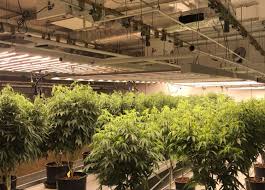While the cannabis industry grows, so does the need for an infrastructure that is specialized to ensure the best health of plants and maximize yield. One crucial component to this system is an HVAC (Heating and Ventilation and air Conditioning) system. Proper HVAC management is essential in cannabis cultivation for maintaining ideal conditions for cultivation and guaranteeing the highest quality of product. This is everything you should be aware of about cannabis HVAC.
1. Importance of HVAC in Cannabis Cultivation
Cannabis plants are highly sensitive to environmental conditions, such as humidity, temperature, as well as air circulation. A well-designed HVAC system ensures that these factors are kept to the ideal level for each stage of growth: seedling, flowering, and vegetative. A proper HVAC management prevents problems such as mold, mildew and nutrient deficiencies, which could seriously affect the health of plants and yield.
2. Key Components of Cannabis HVAC Systems
Heating: During colder months or in areas that experience fluctuations in temperature, keeping a constant temperature is essential. Many growers use heaters and heating mats to ensure that temperatures stay within the desired range. The reliability of a heating unit prevents stress on plants, which could affect the growth of their plants and also their potency.
Ventilation: Proper circulation of air helps in removing excess heat and humidity while bringing in fresh air. This is achieved by the use of intake and exhaust fans and ductwork. Proper ventilation prevents the buildup in CO2, and can cause poor growth of plants. It also ensures that the old air is replaced by oxygen-rich air, which is vital for photosynthesis.
Air Conditioning: In hot conditions or in summer, air conditioning is crucial to keep temperatures at a comfortable level. Air conditioners aid in keeping the air cool, preventing heat stress and ensuring that plants thrive in a controlled and consistent setting.
The process of dehumidification is called Cannabis plants require a particular amount of humidity in order to thrive. A high level of humidity could cause mildew and mold, whereas too little can cause issues with the respiration of plants. Dehumidifiers are a great way to control humidity levels, ensuring they remain within the ideal levels for healthy growth.
3. Automation and Control
cannabis hvac for cannabis cultivation often have advanced automation and control options. This includes programmable thermostats humidity controllers, as well as monitoring of the environment. Automation allows for the maintenance of consistent conditions without any intervention by hand, which reduces the cost of labor and improving efficiency.
4. Energy Efficiency
Energy efficiency is an essential aspect to consider when designing cannabis HVAC systems, specifically due to the energy-intensive demands of indoor cultivation. Installing energy-efficient HVAC systems can help lower operational costs and reduce the environmental impact. Options like variable speed fans as well as energy recovery ventilators and efficient lighting can contribute to overall energy savings.
5. Maintenance and Monitoring
Regular maintenance of HVAC systems is vital for their long-term durability and effectiveness. This involves cleaning the filters, examining for leaks, and making sure that all parts are working properly. Monitoring systems are able to provide real-time data on temperature, humidity, and air quality, which allows for rapid adjustments to keep conditions optimal.
In short, a well-designed and maintained HVAC system is crucial to success in cannabis cultivation. By focusing on heating ventilation, air conditioning, and dehumidification, along with automated practices and energy efficient methods Growers can create the perfect conditions for their plants to thrive and yield high-quality results.

